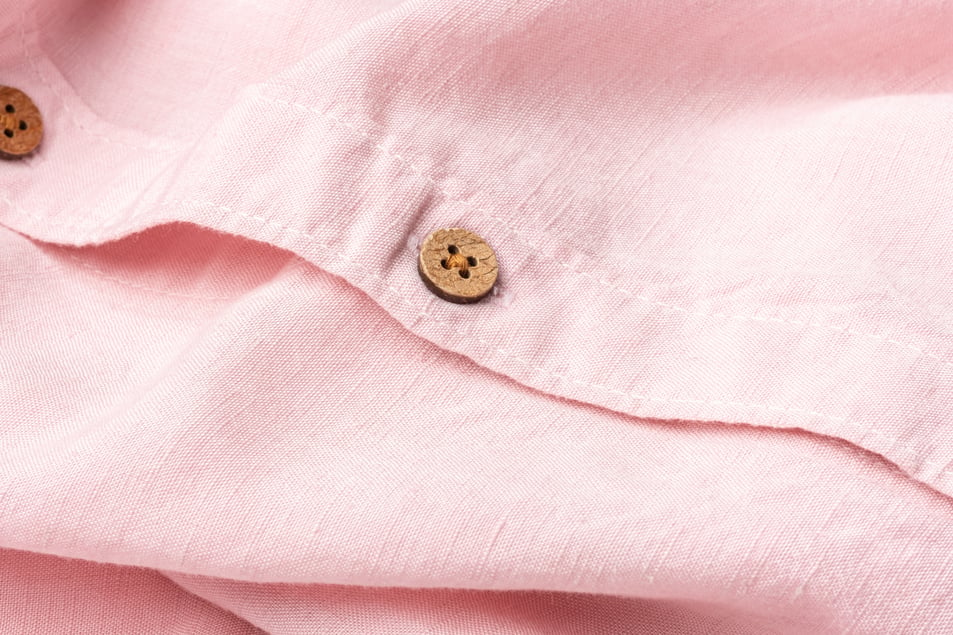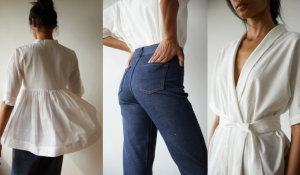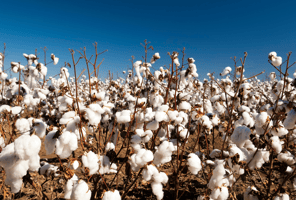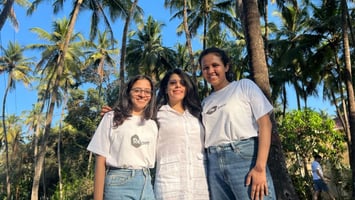I believe brands cannot be 100% sustainable, but products can be. Sustainable fashion is a category...
Decoding Lyocell’s position in the Sustainable Fabric dialogue - Interview 3
I met Gauri and Varun in the Zero Waste Mumbai Whatsapp group. Soon I learnt that they were working on launching a new sustainable fashion brand - Earthy Route. It's been a just a year and they have come so far in their journey. I knew they were working with Lyocell and it was a fabric not many brands solely focus on. So I had to bring their perspective to you.
Kirti: What is the story behind you choosing to work with Lyocell?
Gauri: Statistics suggest that Lyocell consumes 80% less water than cotton. It is entirely plant-based and the manufacturing of Lyocell uses a circular loop process in which 99% of the chemicals that are used in processing the fibers are recycled. We wanted an alternative to cotton that was not very expensive and so we combined Lyocell with Linen.
Lyocell is not only good for the environment but it is comfortable to wear especially in hot and humid conditions. We work with two kinds of fabrics for now. The first is 100% lyocell and the second is a blend of Linen and Lyocell comprising 32% Linen and 68% Lyocell. We had experimented with hemp too but it turned out to be very expensive and we did not want to position ourselves as a premium brand.
Kirti: The Linen that you use – where do you get it from?
Gauri: We don’t procure Linen and Lyocell separately. It is procured either as a blended fabric or as a pure fabric. Lyocell is predominantly sold by two big brands – one of which is Tencel and the second is Excel which is made by the Aditya Birla Group. For our first batch, we used a mix of Tencel and Excel. However, going forward we are going to use only Tencel. We are already in the process of receiving certification from Tencel with a co-branding license.
Kirti: Is Lyocell made in India or made outside India?
Gauri: Lyocell fibers are mostly imported into India but the processing happens in India. There are very few processing and manufacturing spots in the world – one is in Austria and one in Thailand.
Kirti: How do you compare the environmental effects of a fabric that is handwoven in India but the fiber for which is imported, like Linen vs a local fabric?
Gauri: We wanted to create awareness about how cotton is a water-intensive fabric and given the spate of climate problems, the aim was to highlight better alternatives like Lyocell and Linen. As more and more people become aware, there will be an increase in demand for these fabrics and that will serve as an impetus for local manufacturing.
Kirti: I have heard that while Lyocell is sustainable, some microfibers come out in every wash which leads to the fabric fading quickly. Is this something you have also experienced?
Gauri: Lyocell is prone to fibrillation but we haven’t faced this problem with the blend of Linen and Lyocell (which people prefer). However, if you are using 100% Lyocell and if the fabric is not processed properly then fibrillation may happen. There are very few people who can process Lyocell well.
Kirti: Why would you say they prefer it as a combination?
Gauri: When cotton is blended with Lyocell, the processing and dying are easier as opposed to pure Lyocell. Lyocell in its pure form has limited applications - all kinds of garments cannot be made with 100% Lyocell. There are different weaves in Lyocell but due to insufficient demand, it is hard to find them.
Kirti: What about post-consumer waste? Is recycling easy?
Gauri: Recycling in textiles doesn’t work well. It can either be downcycled or upcycled but recycling wherein the original properties of the fabric remain intact is difficult irrespective of whether it is a natural fabric or an artificial fabric.
Kirti: Thats why we created Relove, we know that its not being recycled.
Kirti: What is the price range of Lyocell? Is it cheaper if it is blended with cotton?
100% Lyocell costs anywhere between Rs 250 -350 per meter for a 200-meter fabric bundle. Companies have started mixing Lyocell and Cotton because it is cheaper. The prices of Linen Lyocell and 100% Lyocell are in the same range. There is not much of a difference because Linen itself is very costly – it starts at around Rs 400 – 600 per meter.
Kirti: Is Lyocell wood based?
Gauri: Lyocell is wood-based and is predominantly extracted from the eucalyptus tree. It is part of the viscose family. Modal, Viscose, and Lyocell are the three wood-based fibers that are available. Lyocell is made through a process that is non-toxic and environment-friendly unlike the processing of Viscose.
Kirti: What do you feel about chopping down trees as opposed to growing organic cotton?
Gauri: Branded fibers are made from Forest Stewardship Council (FSC) wood. The forests are sustainably-managed and are specifically grown for making Lyocell. Now acreage required for making Lyocell vs the acreage required for making Cotton has a significant difference. For instance, 1 kg of Organic Cotton would require a larger piece of the land but for the same area of land, I would be able to generate more fiber for Lyocell.
Kirti: Do you think Linen is sustainable?
Gauri: Linen is sustainable. It requires less water and fewer pesticides but the problem with Linen is that it can be grown only in a cool and humid climate. So Linen is mostly grown in European countries. Also, Linen is more expensive than cotton and its applications are limited. For instance, linen cannot be used for making knitted fabric.
Kirti: What fabric checks do you do when you sort the fabric?
Gauri: We send it to a lab in Worli at Sasmira College, Mumbai for getting the fabric tested. They conduct the tests on four levels. But we won’t have to send it to a separate testing lab henceforth because Tencel is giving us a certification.
Kirti: What about shrinkage?
Gauri: We haven’t encountered any shrinkage with 100% Tencel. But on combining with linen, there is shrinkage which is why we have to prewash the fabric. The shrinkage happens along the length and it is in the range of 2-4% depending on the batch of the fabric. It becomes a problem when the shrinkage is along the width.
Kirti: What about bleeding?
Gauri: Our Linen Lyocell fabric is yarn-dyed. It is not garment-dyed or fabric dyed. After 10-15 washes, there is slight fading because of the washes and the detergent.
Kirti: Do you have any favourite detergent?
Gauri: We recommend Coco Custo to everybody. It is very mild. Even if you use half a spoon in a 4 kg cycle, it is enough. We have washed Linen Lyocell in a cold cycle in the machine too.
Kirti: Well knowing Shaan, the founder of Coco Custo and having used it myself I would second that, not only is it mild and kind towards your garments its also kind to the planet.
-------------
Dear Reader,
Hope you enjoyed another deep dive into a fabric, I am interviewing Fashion Founders because they can share their true and real experiences of using that fabric. Do subscribe to future blogs at www.relove.in
Thank you,
Kirti




